Kometos fortas II WW2
Pirmosios žinios apie įtvirtinimų statybas Dauguvos žiotyse datuojamos 1205 m., kai netoli dešiniojo Dauguvos kranto, netoli dabartinės Vecdaugavos, kuri buvo pagrindinė Dauguvos žiotys, buvo pradėtas statyti cistersų vienuolynas ir pilis. Pilis tapo tvirtove, kuri per karus buvo ne kartą sugriauta ir atstatyta. Vykdant Dauguvos upės kranto reguliavimo darbus XVIII amžiuje, Dauguvgrivos tvirtovė palaipsniui buvo atitraukta nuo upės žiočių. Kad upės žiotys būtų saugios laivybai ir neleistų susidaryti seklumoms, 1765 m. Švedijos vyriausybė pradėjo statyti užtvanką dešiniajame upės krante priešais tvirtovę. Užtvankos gale buvo pastatyta patrankos baterija, primenanti kometos galvą, o pati užtvanka priminė jos uodegą, todėl nauja konstrukcija pavadinta Kometos fortu. Šeši tvirtovės spinduliai yra apsupti bastionų, kuriems jų dizaineris švedų inžinierius Erikas Dahlbergas suteikė astronominius pavadinimus – Ryto žvaigždė, Sietas, Pietų ašigalis, Laimės ratas, Jūros žvaigždė ir Šiaurės ašigalis.
Tęsdamas žiočių reguliavimo darbus, Komētfortas atsidūrė kairiajame Dauguvos krante. 1912 m. Mangaļsaloje ir Bolderajoje pradėti statyti keli fortai. Pastatyti du fortai su 254 mm pabūklais, šeši fortai su 152 mm pabūklais ir trys fortai su 138 mm. Kiekviename forte buvo sumontuoti po du pabūklus. Šiandien Komētfortas yra vietinės reikšmės istorinis paminklas, jo atradimas buvo vienas iš pagrindinių veiksnių, sustabdusių naujo uosto terminalo statybą Daugavgryvoje.
Fort Comet taip pat buvo įkalinimo vieta daugeliui žymių asmenų. Čia trumpam buvo sulaikytas Kuršo ir Žiemgalos kunigaikštis Jokūbas su visa šeima, nes atsisakė bendradarbiauti su Švedijos valdžia. Štai būdamas pusantrų metų 1743/44 m. 1811 m. buvo įkalintas nuverstas Rusijos caras Ivanas VI. Liudvikas XVIII taip pat trumpą laiką vyko Daugavgrivos tvirtovėje. XIX amžiuje Dauguvgrivos tvirtovėje buvo laikomi politiniai kaliniai, tarp jų ir kitų tikėjimų. Po Antrojo pasaulinio karo tvirtovėje buvo įrengta darbo stovykla.
Daugiau informacijos šaltinių
https://apkaimes.lv/daugavgriva/vesture/
http://www.citariga.lv/lat/rigas-apskates-vietas/rigas-nocietinajumi/kometforta-dambis/
https://lr1.lsm.lv/lv/raksts/latvijas-perles/bolderaja-zviedru-projektetais-daugavgrivas-cietoksnis-un-nekart.a91383/
Jūsų komentarai
Susijusi laiko juosta
Susijusios vietos
Mangalsalos įtvirtinimai
Pakrantės įtvirtinimai yra Rygoje, Mangaļsaloje, Dauguvos žiotyse, priešais Dauguvgryvą. Čia galima pamatyti įvairių kariuomenių (rusų, latvių, vokiečių ir sovietų) pastatytus įtvirtinimus. Mangalsalos įtvirtinimai buvo pastatyti siekiant apginti Rygos miestą nuo priešiškų laivynų. Ši sritis ilgą laiką buvo strategiškai svarbi. Po Pirmojo pasaulinio karo Latvijos kariuomenė dar neturėjo stipraus laivyno. Jūros siena buvo ilga, o pakrančių gynyba tapo vis sunkesnė užduotis. XIX amžiaus pabaigoje – XX amžiaus pradžioje Latvijos kariuomenė perėmė Rusijos imperijos statytus įtvirtinimus ir išplėtė gynybos sistemą. Dauguvos ir Mangalsalos artilerija atidengtų ugnį į priešo laivus, bandančius įplaukti į Dauguvos žiotis, o atramos taškai prie Lielupės (Jūrmala) ir Gaujos (Carnikava) žiočių sustabdytų priešo desantininkus. Taip pat buvo specialiai įrengtas šarvuotas pakrančių gynybos traukinys, galintis teikti artilerijos ugnį ir paramą Saulkrastų ar Jūrmalos kryptimis. Strateginių objektų įtvirtinimo tikslas buvo maksimaliai panaudoti ginklus per specialias konstrukcijas ir reljefo pranašumus. Pakrantės gynybos įtvirtinimai buvo išskirstyti didelėje teritorijoje, kad karo atveju atremtų priešo pastangas.
Garso vadovas https://izi.travel/en/edbf-mangalsala-fortifications/en
Daugavgryvos tvirtovė
Daugavgryvos tvirtovė (įėjimas iš Birzės gatvės) yra Daugavgryvos saloje, kur Bulupės upė įteka į Dauguvos upę. Tvirtovė buvo pastatyta XVII a., siekiant apsiginti nuo priešų, judančių Rygos kryptimi, kuri buvo svarbus administracinis, prekybos ir gamybos centras. Vėliau ji tapo pagrindiniu Latvijos armijos pakrantės gynybos įtvirtinimu su keliais atramos taškais. Ši gynybinė įtvirtinimų sistema yra vienas vertingiausių Latvijos karinio paveldo objektų. Ši tvirtovė yra Latvijos karinės istorijos liudininkė. Pavyzdžiui, Krymo karo metu (1853–1856 m.) čia buvo mokomos Latvijos ir Estijos patrankinių valčių įgulos. Pagrindinis šių dalinių tikslas buvo ginti vietos uostus ir pakrantę nuo britų karinio jūrų laivyno atakų. Pirmojo pasaulinio karo metu čia buvo suformuotos Daugavgryvos milicijos kuopos. Tai buvo pirmieji Latvijos koviniai daliniai, atsiradę dar anksčiau nei Latvijos šauliai. Šiandien galima pamatyti tvirtovės teritoriją. Netoliese yra Kometfortas ir Pajūrio gamtos parkas, o kitoje Dauguvos pusėje – Mangaļsalos įtvirtinimai.
Pakrantės gynybos baterijos Bolderajoje
Įsikūręs Bolderājoje – į rytus nuo Lielupes gatvės ir į pietryčius nuo Jātnieku gatvės Dauguvos krante.
Išliko keturių susprogdintų baterijų pozicijų liekanos. Šios baterijos, kuriose buvo 152-ojo kalibro patrankos, yra buvusios Rygos įtvirtinimų sistemos dalis, kurios tikslas buvo apsaugoti miestą nuo užpuolikų, ateinančių iš jūros. Iš baterijų viršaus aiškiai matyti Dauguva ir naujai užlieta šiaurinė Krievu salos dalis.
2023 m. pabaigoje, vykdant teritorijos tvarkymo darbus, viena iš keturių baterijų buvo iš dalies sunaikinta.
Susijusi istorija
Kariuomenės buvimas Mangalsaloje
Ryškūs įspūdžiai iš Latvijos kariuomenės buvimo Mangaļsaloje yra ryškūs mano prisiminimuose. Aprašyti fortai bei Sapieri pastatytas gelžbetoninis įtvirtinimas. Prisiminimai aprašo karių kasdienybę, gyvenimo ritmą, iliustruoja Mangalsalos aplinką. Lanko Mangaļsala ir Latvijos kariuomenės kariai
Apie Daugavgrivos tvirtovę
Pasakotojas aprašo įvykį Daugavgrivos tvirtovėje I pasaulinio karo metais, kai ją subombardavo vokiečių dirižablis. Tvirtovė buvo vienas iš strateginių objektų, išlaikęs savo svarbą iki Antrojo pasaulinio karo pabaigos.




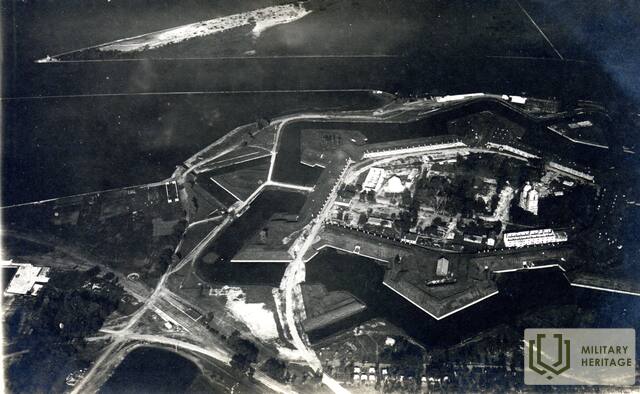

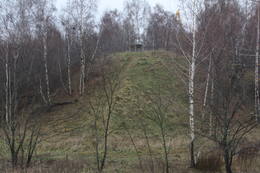
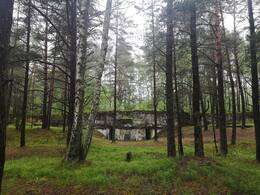
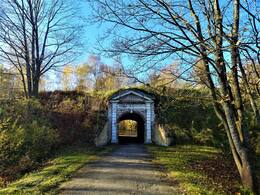
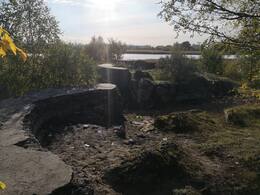
Apie kometos fortą. 1765 m. Švedijos vyriausybė niekaip negalėjo duoti užduoties statyti forto, nes ši teritorija nuo 1721 m. buvo Rusijos imperijos dalis.